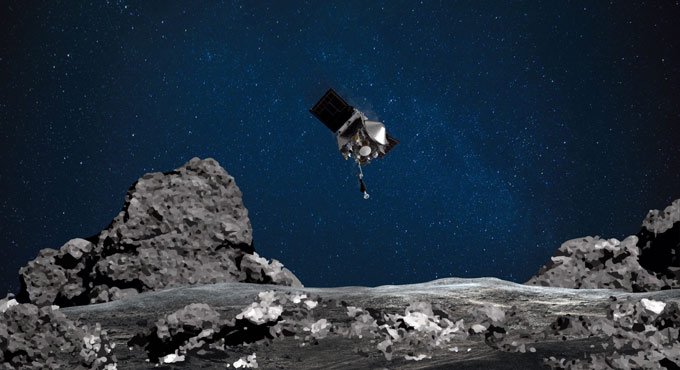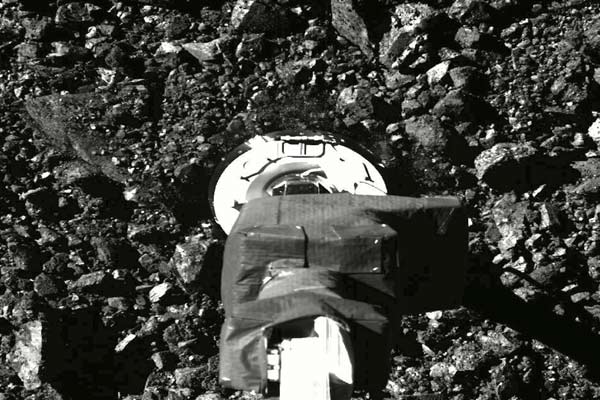OSIRIS-REx (Origins, Spectral Interpretation, Resource Identification, Security, Regolith Explorer) is a NASA asteroid-study and sample-return mission. The mission’s primary goal is to obtain a sample of at least 60 g (2.1 oz) from 101955 Bennu, a carbonaceous near-Earth asteroid and return the sample to Earth for a detailed analysis.
The sample material from Bennu returned is expected to enable scientists to learn more about the formation and evolution of the Solar System, its initial stages of planet formation, and the source of organic compounds that led to the formation of life on Earth.
If successful, OSIRIS-REx will be the first United States spacecraft to return samples from an asteroid.
Asteroid Bennu
Bennu is an asteroid about as tall as the Empire State Building and located at a distance of about 200 million miles away from the Earth. The asteroid was named after an Egyptian deity by a nine-year-old boy from North Carolina in 2013 who won NASA’s “Name that Asteroid” competition. The asteroid was discovered by a team from the NASA-funded Lincoln Near-Earth Asteroid Research team in 1999.
Scientists study asteroids to look for information about the formation and history of planets and the Sun since asteroids were formed at the same time as other objects in the solar system. Another reason for tracking them is to look for asteroids that might be potentially hazardous.
It is for these reasons that scientists are interested in gathering information about this particular asteroid. Significantly, Bennu hasn’t undergone drastic changes since its formation over billions of years ago and therefore it contains chemicals and rocks dating back to the birth of the solar system. It is also relatively close to the Earth.
Mission journey
OSIRIS-REx was launched on September 8, 2016, flew past Earth on September 22, 2017 and reached the proximity of Bennu on December 3, 2018, where it began analyzing its surface for a target sample area over the next several months.
On December 12, 2019, NASA announced the first sampling site, known as Nightingale. On October 20, 2020, it successfully approached Bennu and collected a sample. It is expected to return with its sample to Earth on September 24, 2023.
The cost of the mission is approximately US$800 million. It is the third planetary science mission selected in the New Frontiers program, after Juno and New Horizons. The principal investigator is Dante Lauretta from the University of Arizona.
Spacecraft
The spacecraft contains five instruments meant to explore Bennu including cameras, a spectrometer and a laser altimeter. The departure window for the mission will open up in 2021, after which it will take over two years to reach back to Earth.
Objectives
• Return and analyse a sample of pristine carbonaceous asteroid regolith in an amount sufficient to study the nature, history, and distribution of its constituent minerals and organic compounds.
• Map the global properties, chemistry, and mineralogy of a primitive carbonaceous asteroid to characterize its geologic and dynamic history and provide context for the returned samples.
• Document the texture, morphology, geochemistry, and spectral properties of the regolith at the sampling site in situ at scales down to millimeters.
• Measure the Yarkovsky effect (a thermal force on the object) on a potentially hazardous asteroid and constrain the asteroid properties that contribute to this effect.
Now you can get handpicked stories from Telangana Today on Telegram everyday. Click the link to subscribe.
Click to follow Telangana Today Facebook page and Twitter .

 The sample material from Bennu returned is expected to enable scientists to learn more about the formation and evolution of the Solar System, its initial stages of planet formation, and the source of organic compounds that led to the formation of life on Earth.
The sample material from Bennu returned is expected to enable scientists to learn more about the formation and evolution of the Solar System, its initial stages of planet formation, and the source of organic compounds that led to the formation of life on Earth.